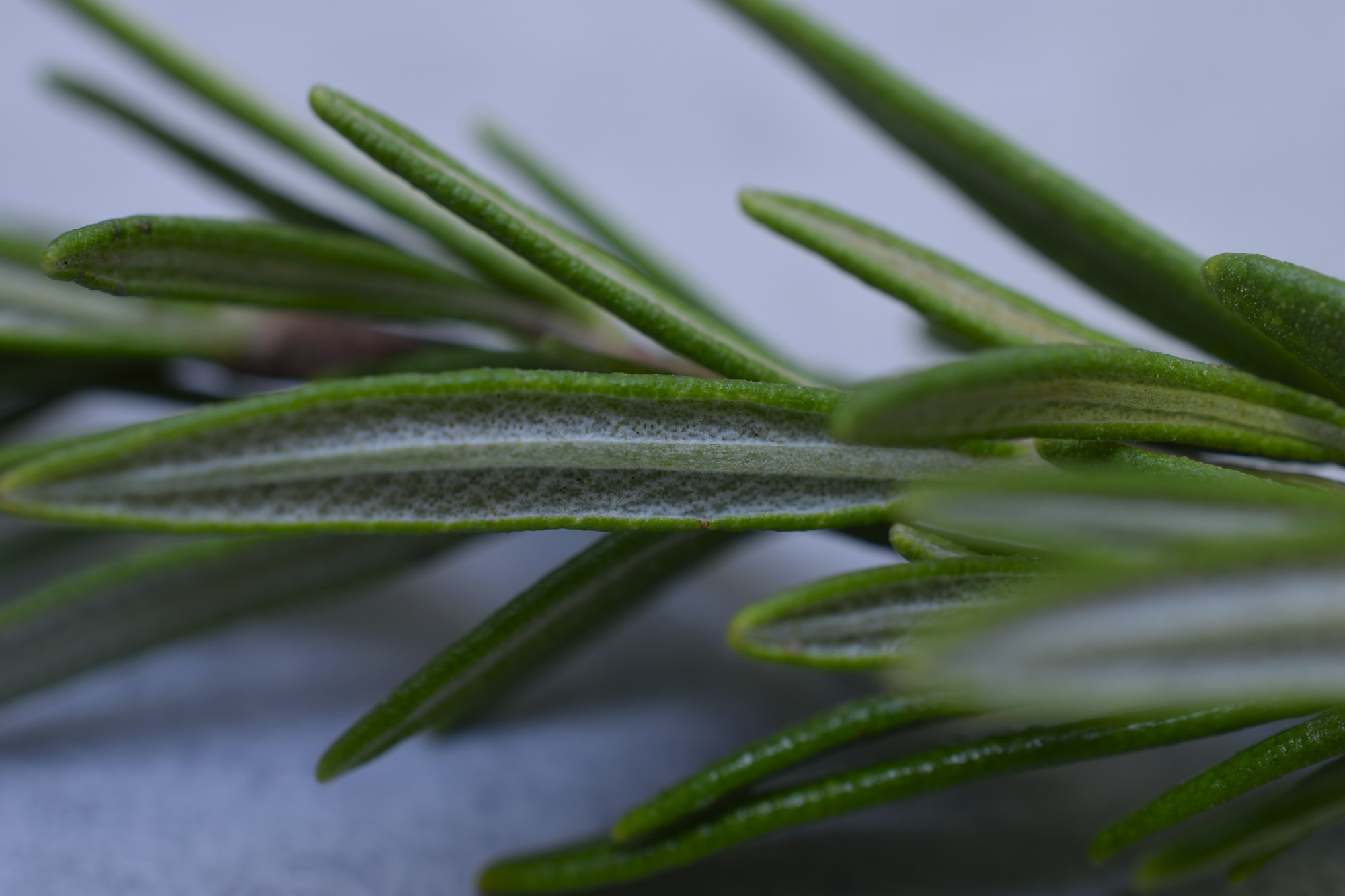Sous Vide: Herbs and Spices
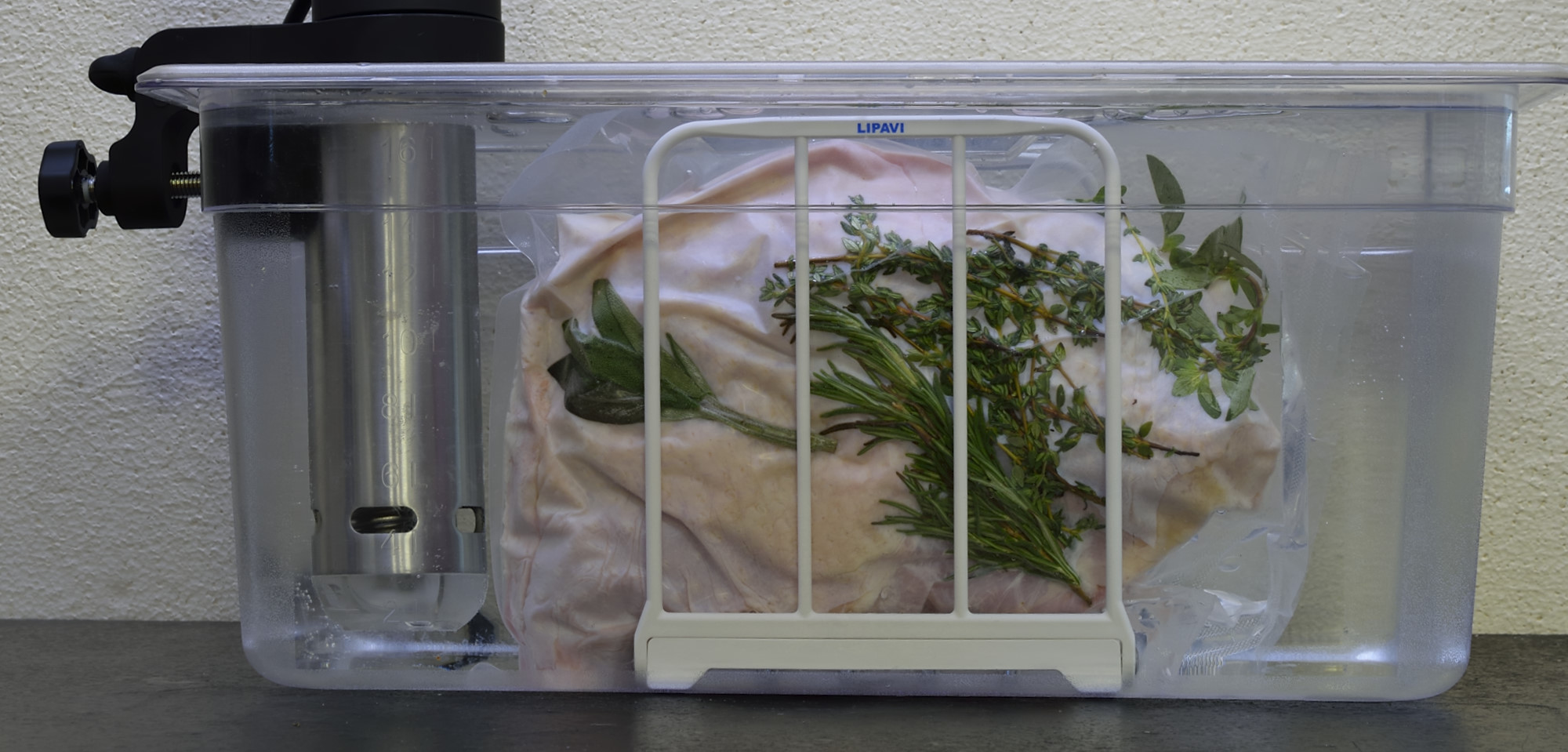
About
Can utilizing sous vide methodology to introduce the flavors of herbs and spices bring precision and predictability to the artistry?
Ingredients
Allspice
Basil
Bay Leaf
Caraway Seed
Cardamom
Cayenne Pepper
Chives
Cilantro
Cinnamon
Cloves
Coriander Seed
Cumin
Dill
Fennel Seed
Garlic Powder
Ginger
Mace
Mint
Nutmeg
Oregano
Paprika
Parsley
Peppercorns
Rosemary
Saffron
Sage
Star Anise
Tamarind
Tarragon
Turmeric
Thyme
Instructions
The Boil Down:
Flavor and aroma are securely intertwined in our psyches--typically lumped together into one converging phenomenon. However, the two sensations are completely separate, detected by two different organs and precipitated by distinctly different molecular compounds called flavonoids--tastant and odorant, respectively. Modern science has finally gotten around to distinguishing how the mechanisms behave, as well as the flavors and aromas themselves. Flavonoid molecules all have 15 carbon atoms and varying amounts of hydrogen and oxygen. Flavonoids have also been identified as strong, health promoting anti-oxidants. Not all flavonoids are strong in flavor or aroma. The taste buds in our mouths also detect non-flavonoid chemicals that create sweet, salty, sour, and bitter sensation; glutamate/umami (Japanese for "savory") also falls into this category--these particular flavors have no smell in and of themselves.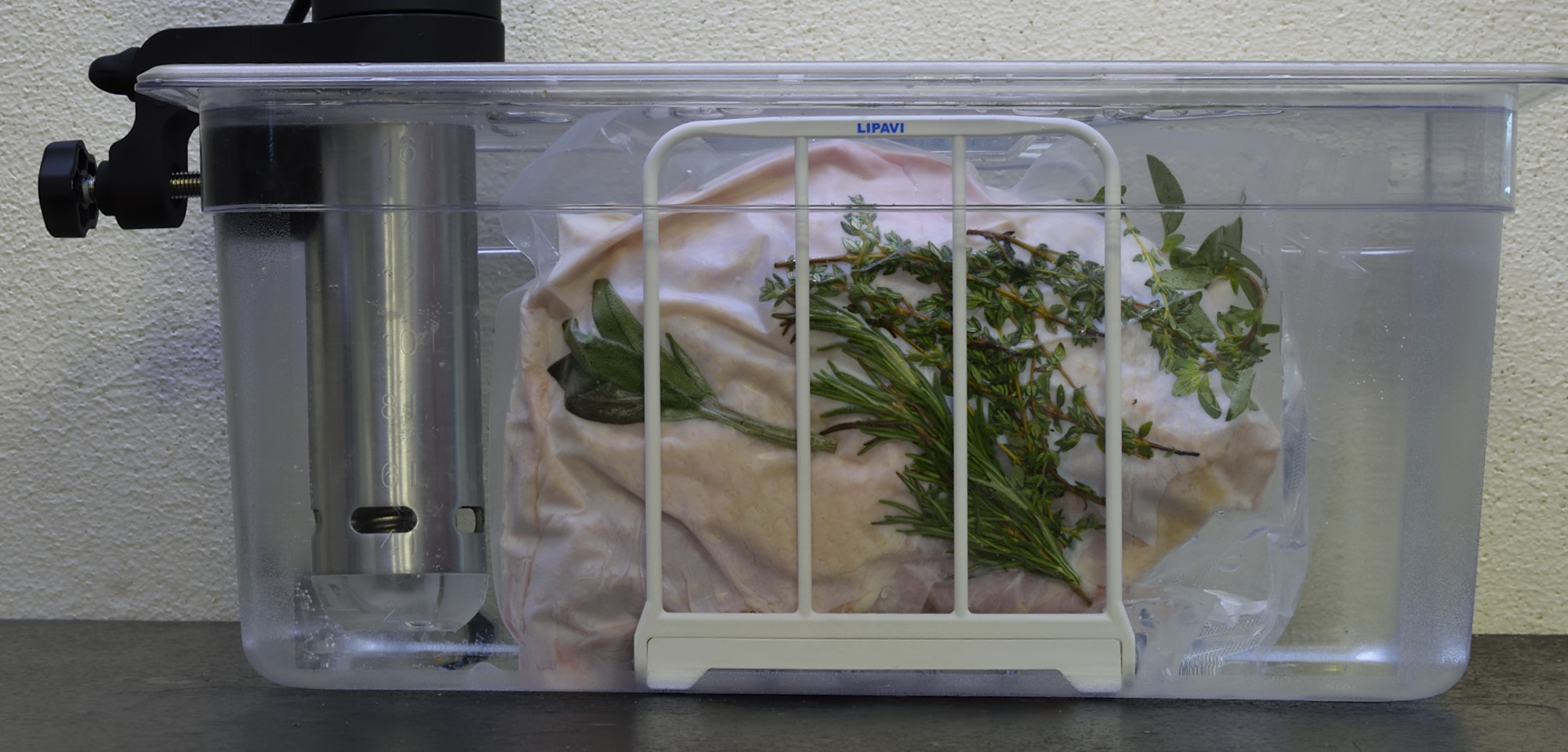
Implementation
Over-zealous application of seasonings can obscure the characteristics of the foods they are intended to enhance. The fact is, herbs/and spices are typically applied in at least triple the amount actually required to achieve the desired effect. The often futile exercise of of measuring small amounts by weight or even volume muddies the water even further, both figuratively and literally. The solution to this dilemma is to maximize the impact of approximated levels of seasoning while minimizing waste resulting from evaporative aromatic dissipation. Odorants possess a finite amount of bouquet. The aromas wafting through the kitchen during non-sous vide cooking processes are fragrance being squandered. The attributes of spices sealed in the sous vide pouch have nowhere to escape and are therefore more efficiently introduced--a little goes a long long way. Almost all herbs and spices bring a certain amount of bitterness with them. Most people do not think of bitterness as a favorable component of flavor profiles, but the best tasting foods all incorporate a certain amount, typically muted by the other flavors. What would coffee be without bitterness? The aromas of certain herbs like cinnamon and its counterparts are frequently described as being "sweet," but our noses cannot actually detect sweetness any more than they can detect saltiness. However, when Westerners smell cinnamon, for example, we are reminded of pumpkin or even apple pie. Our brains do the rest for us.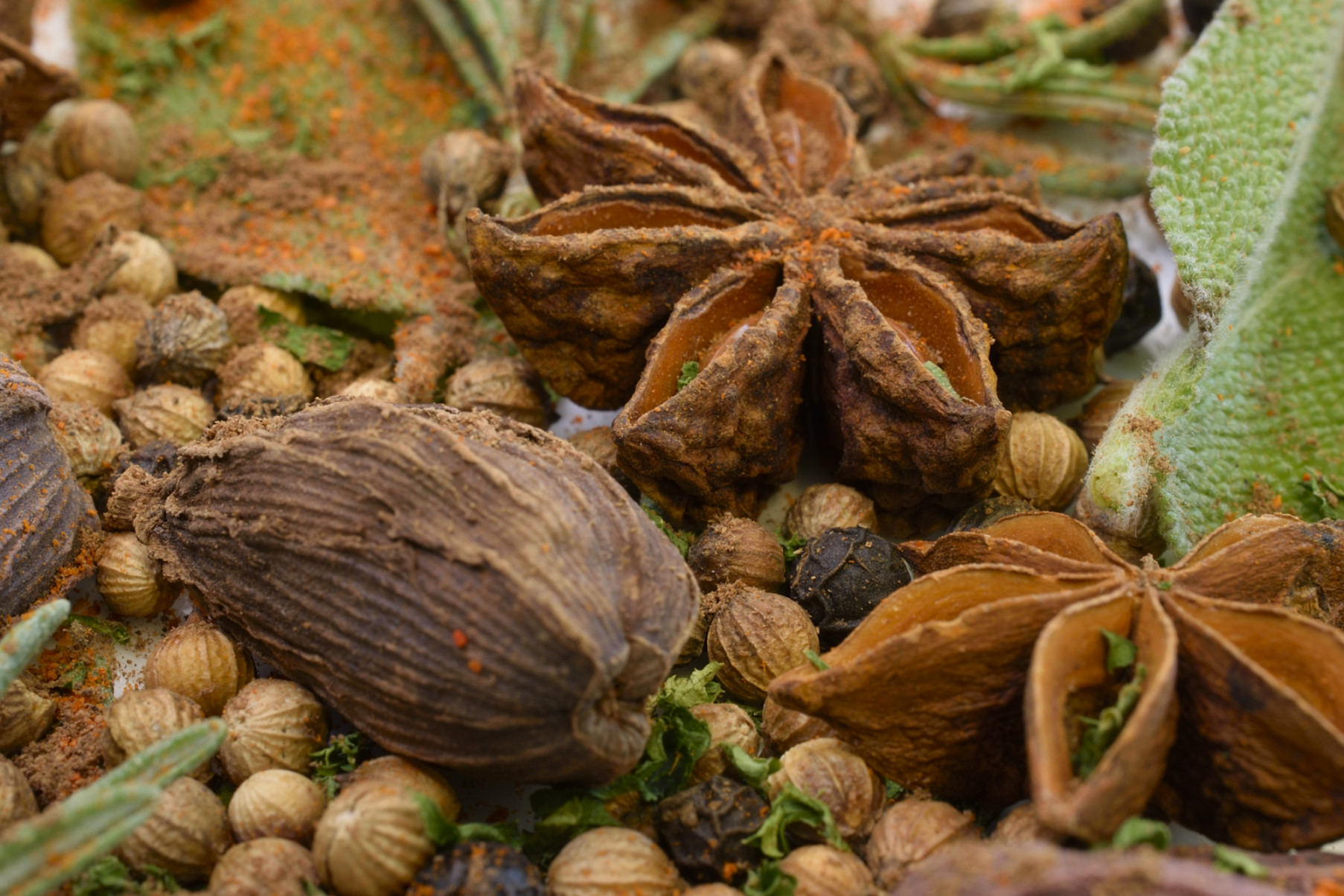
Facilitation
In some cases, exposure to moderate amounts of moist heat for short periods of time can convert other chemicals (phenolics) into flavonoids--slowly frying onions can create this effect. However, the general notion that "long cooking" improves the flavor of herbs and spices is contradicted by the scientific evidence. In fact, the more time herbs and spices spend in a hot, moist environment, the more damage and dispersion they experience. Once hydrated and denatured, the attributes of flavonoids do not "develop" in and of themselves, but rather merely deteriorate/dwindle to varying degrees until sauces and stews meet the highly subjective "mellowed" expectations of the cook. Every conceivable adjective is used to describe the aromas and flavors of herbs. There is no substitute for real time familiarity. The best method for acquiring an understanding of herbs and spices is very intuitive--smell them. Taste a small amount and you will most likely discover that the aromas are much more complex than the flavors, which tend to be bitter.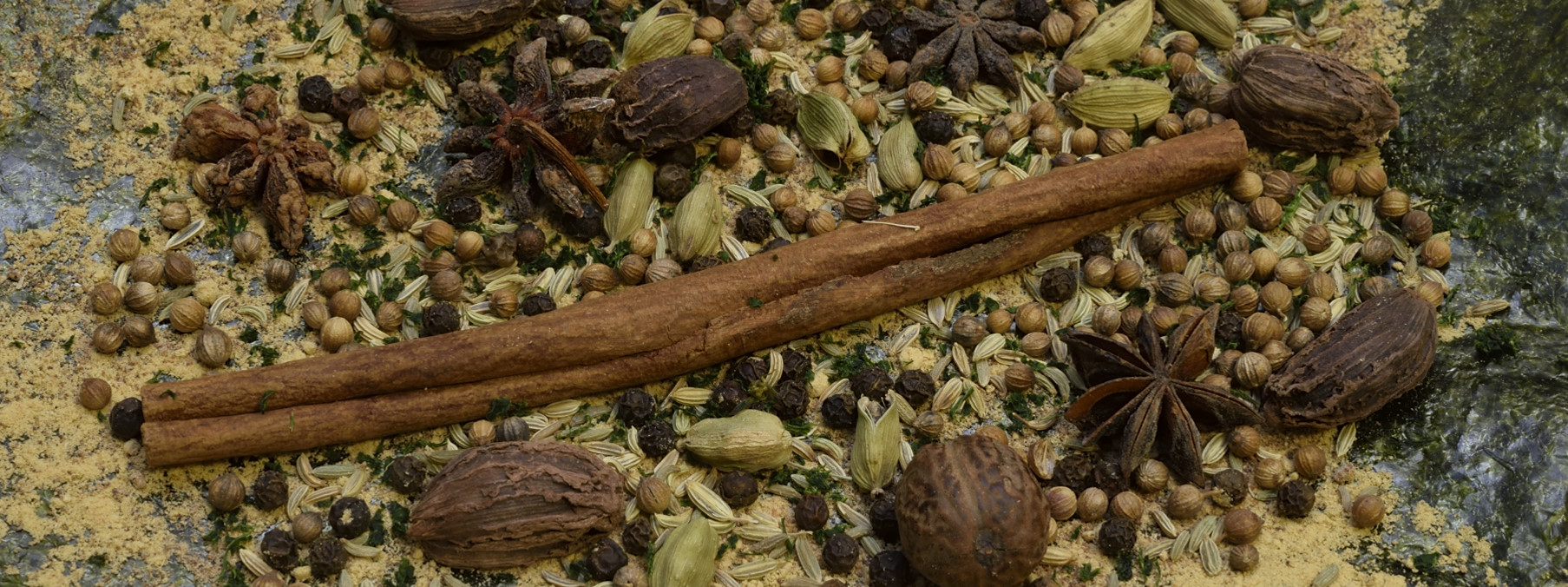
Choices
There exists a persistent fallacy that herbs, spices and flavors in general can actually penetrate the surface of land/air dwelling proteins. While marinades may bring flavor (and color) to the surface of chicken breasts and steaks, flavonoid molecules are too large to permeate the tightly woven matrix of long protein chains that constitute meat. The cellular membrane repels flavonoids because they are polarized molecules. Cell walls resist osmosis because they are hydrophobic--water itself cannot penetrate non-living cell walls without the facilitation of conditions and chemicals that are not present in the sous vide environment. But that does not mean that introducing herbs and spices into the sous vide pouch is without merit. It means we have choices that we were unaware of until now! Whether processed sous vide or otherwise, herbs/spices can contribute to the flavor of protein based foods--ultimately, as surface treatments or in solution as sauces and the like.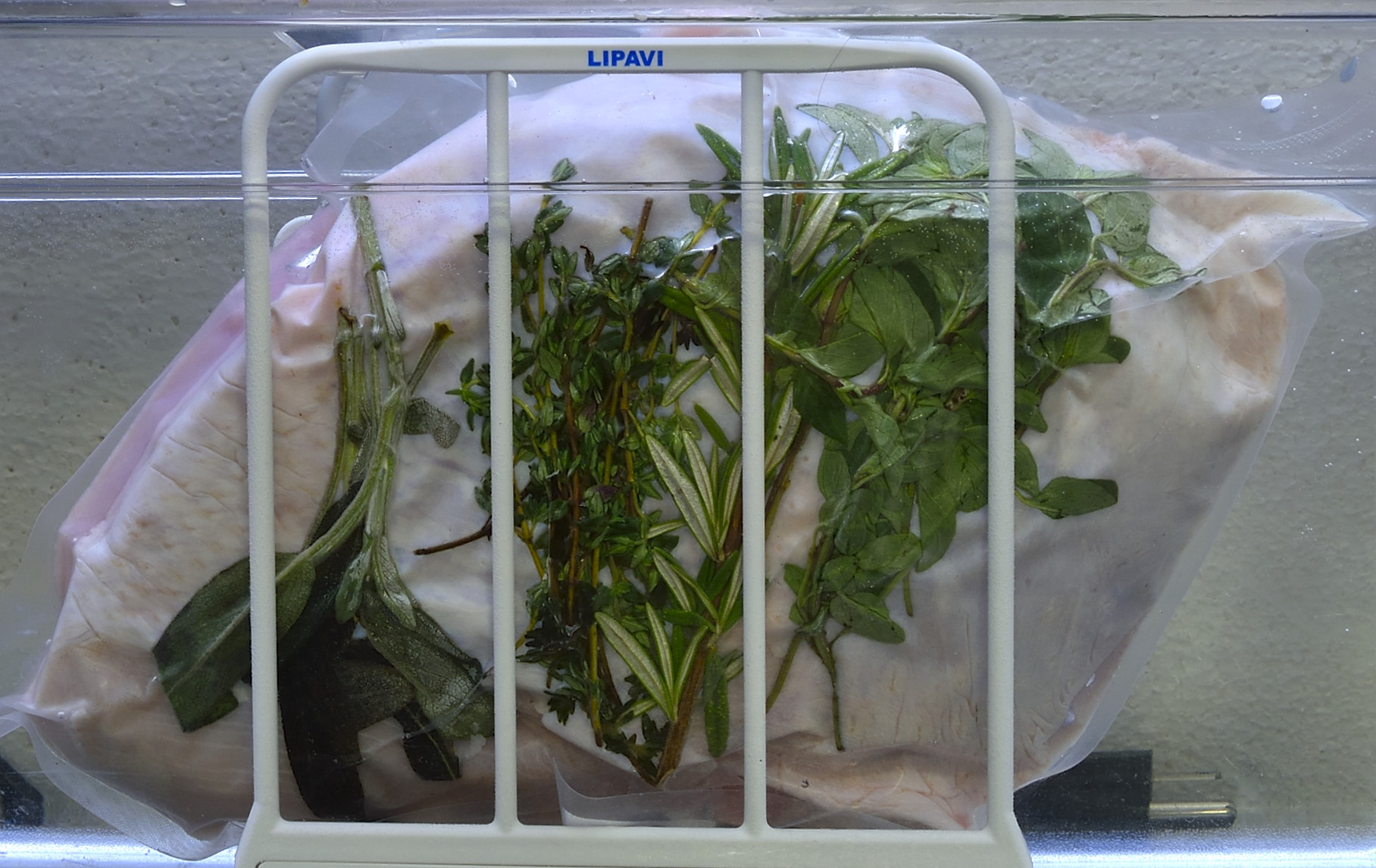
On The Outside
For surface treatment, proteins are first sous vide processed in the pouch either au naturel (naked) or salted in the amount of 2 teaspoons/Kg (1 teaspoon/lb). This common practice is especially useful when large batches of chicken breasts, etc. are processed individually with the intention of deciding later how proceed with specific flavor profiles--Mexican, Italian, American, BBQ, etc. The herbs and spices are then applied utilizing this POST PROCESSING PROCEDURE.On The Inside
Our mouths (and noses) are imprecise in their detection of layers. We assume that surface treatments have infiltrated the proteins that we are eating, but we really can't tell one way or the other. The burst of flavor on the exterior is quickly amalgamated with the desired interior texture, and all is right with the world. Enthusiasts who introduce herbs and spices into the sous vide processing pouch are disappointed to discover just how little effect the effort actually has on the flavor of the meat. There is a reason for this. While herbs and spices tend to cling to the albumins on the proteins' surface in the raw state, the application of heat reverses the effect by denaturing/coagulating the albumins. The heat necessarily causes the protein to lose a certain amount of moisture, dissolving the flavorings into the environment--as it would to an even greater degree in any other form of moist cooking. When you simmer meatballs in sauce, the flavor of the sauce does not enter the meatballs. The flavor (and moisture) of meatballs enters the sauce. For many people, this is very difficult to accept. The water based release that remains in the bag after processing retains the hydrated but uncooked spices, along with albumins and myoglobin. These give it a dark, cloudy appearance and occasionally an "off" smell. In order to harvest the flavor of the spices in the juices, the coagulated solids can and should be removed.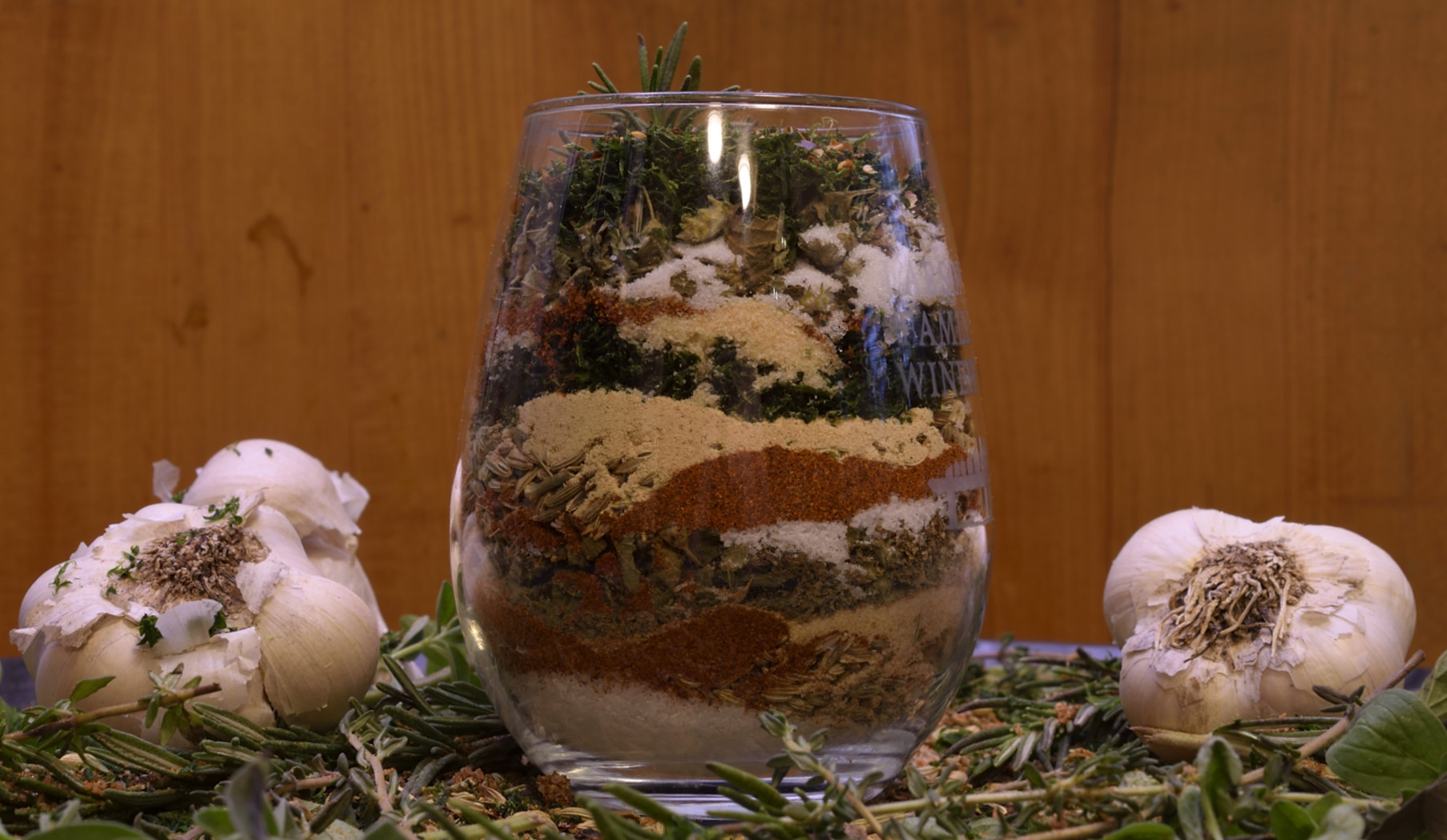
Sous Jus
After sous vide processing with herbs/spices in the pouch, the package is removed from the bath. If the intention is to store the project for retherming at a later date, it is then shocked cold as explained HERE. Otherwise, the pouch is opened and the protein is removed to be set aside. The juices (and hydrated herbs) in the pouch are staged into a microwaveable container or a small sauce pan tall enough to prevent boiling over. The juices are then brought just to a boil and the heat is reduced to a simmer for thirty seconds--the denatured result will be darkened with gray particulate matter suspended in a clear liquid. A coffee filter is moistened to prevent clinging and is then used to strain the juices into a suitable container. The end result will be a clear fluid. The attributes of the herbs and spices will be prominent because the short boiling process has completed the denaturing process. This Sous Jus will also taste of the protein itself, just as if it were a heavily reduced stock or consommé--no further reduction is required. At this point, the cook determines if the broth is savory enough to meet the requirements of his/her current recipe and preferences. If more flavor is desired, herbs/spices can be added to a small amount of water/sauce or the Sous Jus and simmered further. This Sous Jus can also be used to create its own distinct sauce, as explained HERE. If the intention is to utilize fresh herbs, this would be the time to incorporate them.
Measuring Spices and Herbs
As previously mentioned, the most common mistake in the use of herbs and spices is heavy-handedness. Large manufacturers can measure herbs and spices accurately by weight because they deal in amounts that are easily gauged in this manner. For the chef or home cook, herbs and spices are more easily and accurately measured by volume. This means that small measuring spoons are a good investment. The upward conversion of volume measurements by teaspoon increment is easy, as follows: When calculating amounts oneself, 1 teaspoon/serving/person of almost any particular spice need rarely be exceeded. Most formalized recipes reflect this general ratio more or less. 1 teaspoon equals 5 milliliters. 3 teaspoons (not 2) equal 1 Tablespoon/15 milliliters. 2 Tablespoons equal 1 Fluid Ounce/30 milliliters. Fresh herbs are more floral and aromatic than dried ones, but tend to lose their distinct attributes when exposed to heat for more than a few minutes. Dried herbs are typically three times as strong in flavor as fresh ones. As always, there is no accounting for preference and spice blends can be and usually are adjusted to personalize and/or suit individual tastes. Even the measurement of the strength of certain flavors as compared to others can be very subjective.Blending Spices
Companies that market spice blends ("rubs") maximize profit by charging "spice sized" prices for a product that is still predominantly salt and sugar in one form or another. Many chefs take a dim view of spice blends to the point of forbidding fabrication of individualized ones in their restaurant kitchens. The concern is that once you have created a spice blend, all the foods it is applied to from that moment forward will take on a sort of dreadful sameness. However, blending spices may have more advantages than detriment. Measurement of ingredients becomes easier when creating batch sized amounts of blended spices. What was originally 1/3 of a teaspoon of something like cloves can become an easily measured Tablespoon. There is an increased benefit of convenience when there exists a basic blend of salt, pepper and garlic powder within arm's reach as an all purpose seasoning, and many chefs are loathe to admit that they actually do this at home. A little thyme, a little this, a little that, with ongoing combination and variation. The dominant principle is that salt is generally applied in the amount of 2-4 teaspoons/Kg (1-2 teaspoons/lb.), leaving upward latitude to achieve personal preference. Even the most "herbaceous" rubs are still at least 75% salt by volume (and more so by weight), which means the desired balance will be achieved without micro-measuring herbs and spices.Down to Business
Allspice "“ Used in savory and sweet dishes, this pungent and aromatic spice's flavor is reminiscent of a combination of cinnamon and cloves. It is commonly used in spice rubs for BBQ meats and pastrami in the West, and in a variety of complex blends common to Jamaican (jerk), Middle Eastern and African styles of cooking. Ground fine, it adds kick when substituted for cinnamon/nutmeg as a shaken topping for coffee and cocoa drinks. Basil "“ Robust, peppery, fragrant and even almost minty--basil is actually a type of mint. This herb is inexorably linked to Italian style tomato sauces and pesto. Bay Leaf "“ Also known as laurel, bay leaves are high in eucalyptol, an essential oil commonly used in cosmetics and fragrances. The flavor of bay itself is benign and the leaves are not edible. The strong, floral, evergreen aroma is usually associated with Italian, tomato based sauces and is frequently mistaken for oregano or marjoram. Caraway Seed "“ Caraway is easily identified as the prominent flavoring present in most versions of rye bread. It is commonly applied to pork and is a familiar addition to sauerkraut. Related to carrots, the flavor is vaguely similar to anise and is commonly introduced into mustard based condiments. Cardamom "“ Green and black cardamom originates in India and is ubiquitous in the regional cuisine. Green cardamom is used more commonly than its black counterpart and has a lighter, sweeter flavor. It is often used in desserts and sweet drinks. Black cardamom is also used in pastry, especially in Nordic countries. The flavor is strong and pungent with subtle hints of lemon and mint, but less bitter than many other herbs. The aroma is "sweetly" floral. Black cardamom has a slightly smoky note. Commonly combined with cinnamon and cloves, black cardamom is also a spicy "secret" ingredient in competitive Bloody Mary formulas and even appears in curries, Middle Eastern teas and coffees. Cayenne Pepper "“ Red chili peppers are dried and fine ground to make this standard ingredient in Cajun cuisine. While considerably hotter than black peppercorns (or white peppercorns), they are not as hot as chipotle or some of the other recently popularized "super hot" peppers like Ghost or Scotch Bonnet. Cayenne is used to zest Hollandaise sauce and is hot enough to introduce in amounts small enough to avoid adding any pink tint. Chilis "“ There is a vast number of peppers of the genus Capsicum. Heat varies more than the other flavonoid driven distinctions, and many people substitute one chili pepper for another or combine them. Some like Cayenne and Gochugaru are unique enough to be specified for certain applications like Hollandaise sauce and Kim Chee. Some are roasted or smoked to be peeled; Jalapenos are smoked to become chipotle peppers. Cinnamon "“ One of the most widely used flavorings, there are very few spice racks that do not contain cinnamon. Typically associated with cookies, pastry and other sweets, it is also extensively used in savory dishes like chili and other meat stews. Many recipes for ginger snaps actually contain more cinnamon than ginger. Frequently utilized in concert with nutmeg, allspice, ginger and/or cloves. People are usually surprised to discover that pumpkin (and other winter squash) are quite bland, and that the flavors associated with them originate in the inclusion of cinnamon and its counterparts into the dedicated recipe. Cloves "“ Cloves are unopened flower buds of an Indonesian evergreen tree. The aroma is pleasingly exotic, the intense flavor is rich, warming and deep but fairly bitter. Cloves are usually combined in small amounts with cinnamon, nutmeg, ginger and allspice in the ever familiar pumpkin pie flavor profile. Chefs put cloves in rich stocks but the intention is not to actually taste cloves in the final result. Cloves pair well with pork, apples and citrus fruits, as well as pickled vegetables and even chocolate. Coriander Seed "“ Earthy, lemony flavor. Appears in everything from pastrami crust to curry powder, especially common in Asian and Hispanic cooking. Coriander seeds grow to become cilantro leaves, but the two flavors are distinct from each other. Cumin "“ Smoky and earthy with a much stronger aroma than flavor. Originates in Asia, but early spice trade brought it to popularity in the New World, especially Southwestern/Tex-Mex and Mexican cuisine. Frequently partnered with chilis in some form. Dill "“ Conspicuous in its combination with vinegar to flavor (dill) pickles but equally pleasing with fish, potatoes even tossed into salads. The leaves closely resembles Fennel/Sweet Anise. Dill is not usually used in conjunction with other herbs, but combines well with garlic. Fennel Seed "“Aromatic native to the coastal Mediterranean but popular worldwide. Sweet, enigmatic licorice fragrance and flavor similar to anise and star anise although the various plants are not closely related. Aromatic and distinct, dominant in beverages like Pernod, Ricard and Pastis but also used in sweet and savory dishes from a to z. Biscotti. Candy. Italian sausage. Bouillabaisse. As a flavoring for tea and even to freshen breath. Combines well with the Mediterranean style Rosemary/Oregano/Thyme triad. Garlic Powder-Fresh garlic is dehydrated which softens and sweetens the overall profile. Ginger "“ Bold, pungent, and sweet-spicy flavor with a bite--ubiquitous in Chinese cooking, but also commonly used in the New World. Cookies. Ginger ale, gingerbread, ginger snaps, ginger beer and a popular "therapeutic" ingredient in herb teas. Gochugaru "“ This Korean red pepper spice is hot, sweet, and ever-so-slightly smoky. An essential ingredient in Korean cuisine, gochugaru (or kochukaru) is a coarsely ground red pepper with a texture between flakes and powder. Substitutes like crushed red pepper or cayenne fall flat, this flavor is what makes kimchee HOT Grains of Paradise "“ Woody and aromatic, these taste like a cross between cardamom, citrus, and black pepper. They add a warming note to many North African dishes but not commonly found in Western spice aisles. Loomi "“ Also called black lime, this is ground from dried limes. Adds a particular, citrusy bitter/sour kick to many Middle Eastern dishes. Mace "“ From the same plant as nutmeg, but more subtle and delicate. Usually associated with pastries and other sweets, but suitable for savory dishes, light colored sausages made from veal and pork. Nutmeg "“ Sweet and pungent. Eggnog is what most people in the West sprinkle nutmeg into. It is a pro-digestive, authentic, classic ingredient that is usually left out of Fettuccine Alfredo because less adventurous diners find it distracting in savory dishes. It is widely used in Indian and Indonesian food. In the Caribbean, it is used to flavor a wide variety of drinks. Oregano "“ Robust, perfume-like aroma. Used in Mexican and Mediterranean dishes, but most familiar as the aroma outside of pizzerias. An essential ingredient in Italian tomato sauces, popular along side grilled meats and other dishes with strong flavors. Paprika "“ Adds a sweet note and a dominant red color without contributing heat. Used as a sprinkle topping for baked dishes and in stews and spice blends. Almost always included in BBQ rubs to preserve the red appearance. Spanish paprika is somewhat milder and "blander" than Hungarian paprika. Combines well with the Rosemary/Oregano/Thyme triad. Peppercorns "“ Peppercorns start off green in color, and if left on the tree they eventually turn black. White pepper corns are black peppercorns that have been peeled. Green is the mildest, white is the hottest. Rosemary "“ Strong and piney. Great with eggs, beans, and potatoes, as well as grilled meats. Rosemary has a piney aroma and a distinctive sharp flavor. Rosemary is very dominant in aroma and flavor and can overwhelm a dish if added in excess. Most chefs start with the minimum called for in a recipe and work their way up to the desired level. Commonly fused with oregano/basil/bay. Saffron "“ Saffron has an intense distinct floral flavor and aroma and gives foods a bright yellow color. Bouillabaise, pastries, rouille, paella, risotto Milanese in the West, and highly prized in Persian and Middle Eastern cooking. Sage "“ Potent "jump in the mouth" pine-like flavor with more lemony and eucalyptus notes than rosemary. Found in a lot of northern Italian cooking, and the classic spice in Thanksgiving turkey dressing. Smoked Paprika "“ Adds sweet smokiness to dishes, as well as a red color--not hot. Star Anise "“ Sweet, bitter. It is the Asian version of fennel/anise seed, although unrelated. Stronger than the western versions, a primary ingredient in Chinese five spice--intense licorice flavor. Tamarind "“ Tamarind is the pulp surrounding the seeds from a tree that originates in Africa. It is available as a compressed block (with seeds and stems), as a paste, but also as a powder. With growing recognition in the Western world, tamarind is a dominant flavoring in cola, BBQ sauce, steak sauces and Worcestershire sauce. Tarragon Strong distinctive aroma and almost specific to Béarnaise sauce. Sweet, exotic flavor. Turmeric "“ Used more for its yellow color than its flavor, turmeric has a mild astringency to it. Slightly bitter with a bit of earthy spiciness, it is an acquired taste. One of the primary color driving ingredients in green curries. Some budget attentive enthusiasts substitute it for saffron. Thyme "“ Pungent, green/woodsy flavor. Great as an all-purpose seasoning.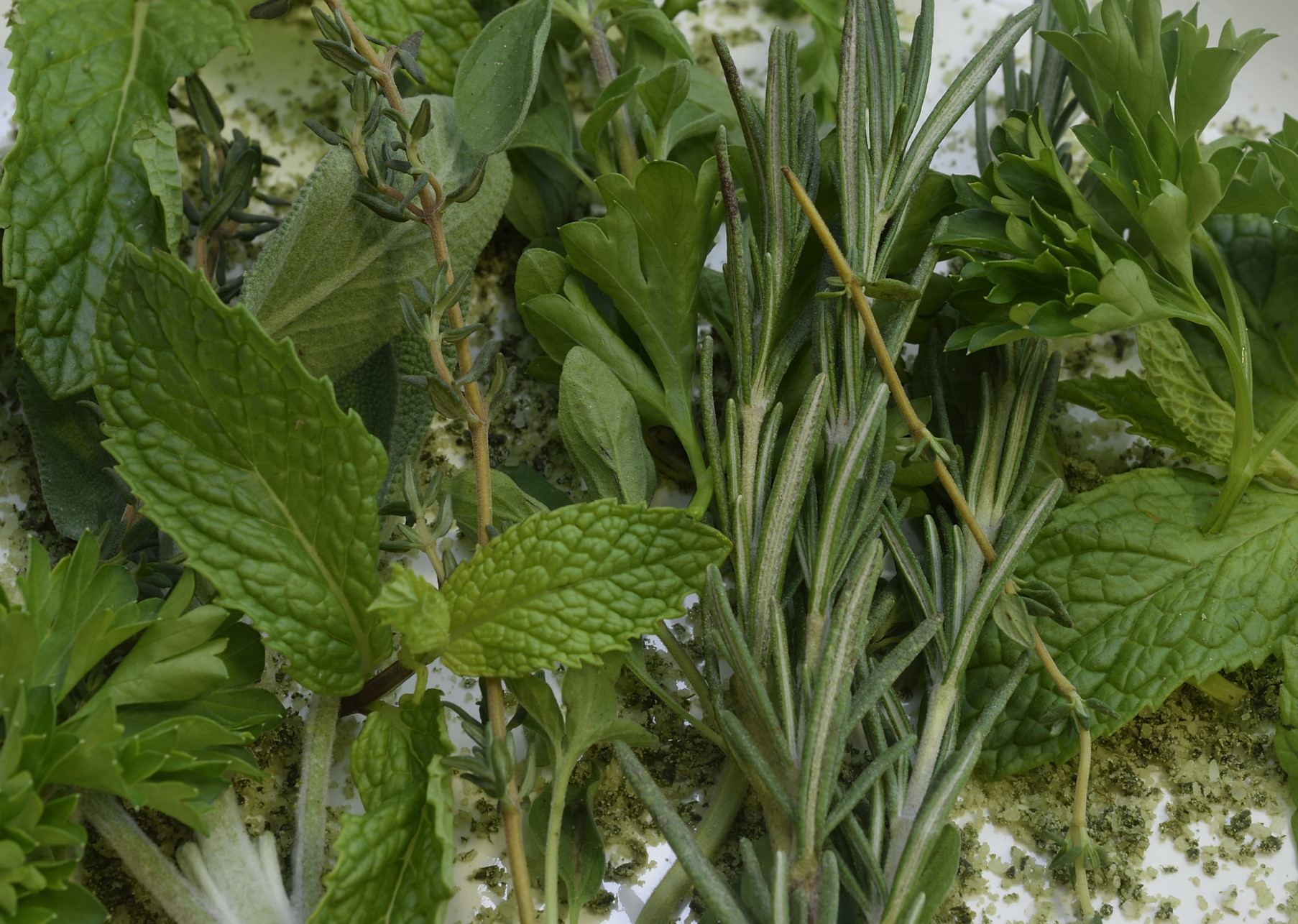
Fresh Herbs
Basil "“ This is the unmistakable flavor present in Italian pesto--robust, peppery, and even almost minty--basil is actually a type of mint. Refreshing. Chives "“ Delicate onion flavor, great as a garnish. Cilantro "“ From the coriander plant, cilantro leaves and stems have a pungent, astringent characteristic. Famously used in salsa and guacamole. Caribbean, Latin American, and Asian cooking. 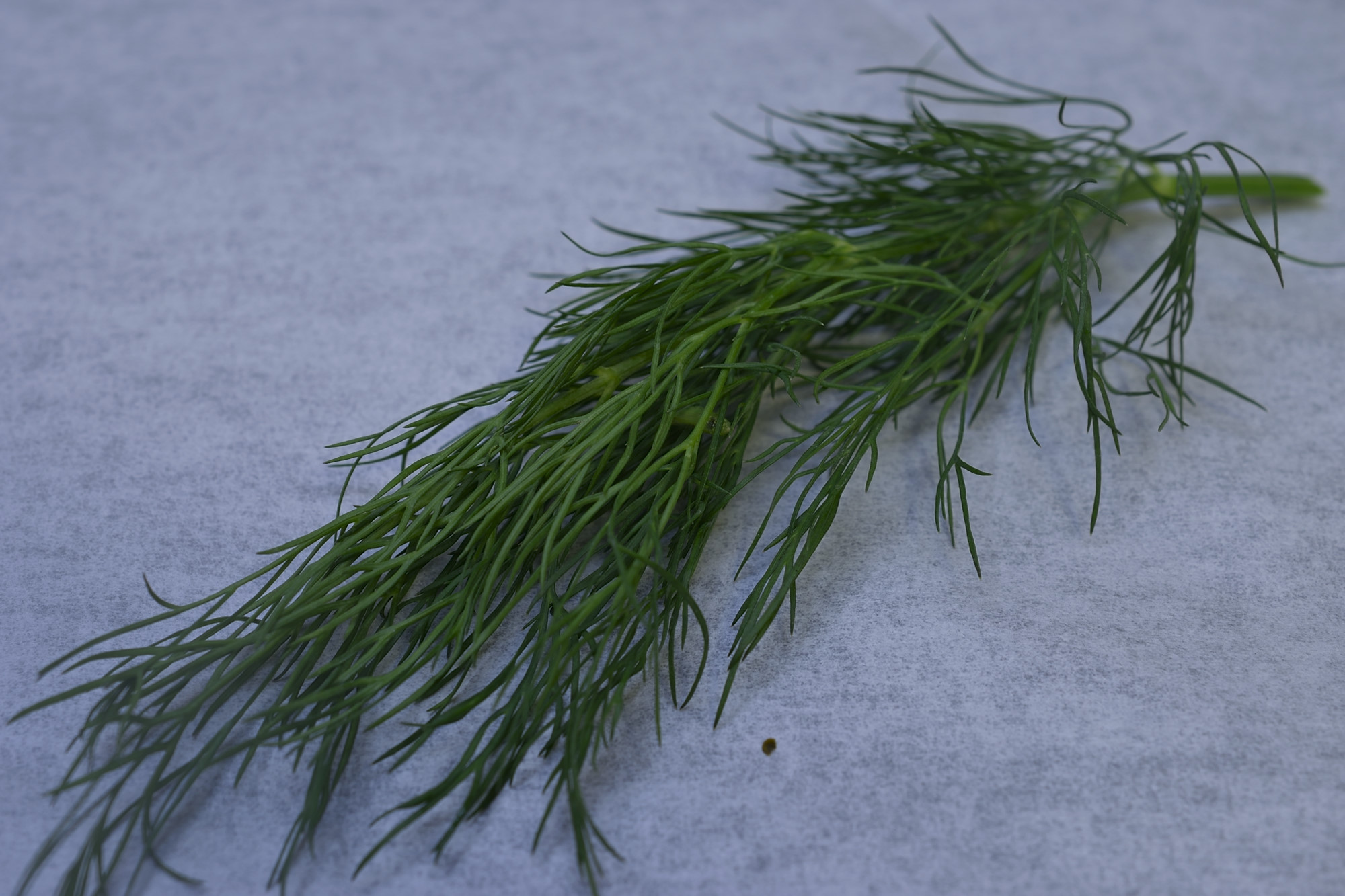 (Above) Dill "“ Light and feathery herb with a pungent flavor. Most commonly used to flavor (dill) pickles, but equally pleasing with fish, potatoes, even tossed into salads. Looks exactly like Fennel/Anise. Fenugreek "“ Although this herb smells like maple syrup while cooking, it has a rather bitter, burnt sugar flavor. Found in a lot of Indian and Middle Eastern dishes. Marjoram "“ Floral and woodsy. Strong, fragrant and very similar to oregano. Mint "“ Surprisingly versatile for such an intensely flavored herb. Not just for chewing gum. Lamb, peas, pasta, potatoes, teas and chocolate! Many chefs find it interchangeable with basil.
(Above) Dill "“ Light and feathery herb with a pungent flavor. Most commonly used to flavor (dill) pickles, but equally pleasing with fish, potatoes, even tossed into salads. Looks exactly like Fennel/Anise. Fenugreek "“ Although this herb smells like maple syrup while cooking, it has a rather bitter, burnt sugar flavor. Found in a lot of Indian and Middle Eastern dishes. Marjoram "“ Floral and woodsy. Strong, fragrant and very similar to oregano. Mint "“ Surprisingly versatile for such an intensely flavored herb. Not just for chewing gum. Lamb, peas, pasta, potatoes, teas and chocolate! Many chefs find it interchangeable with basil. 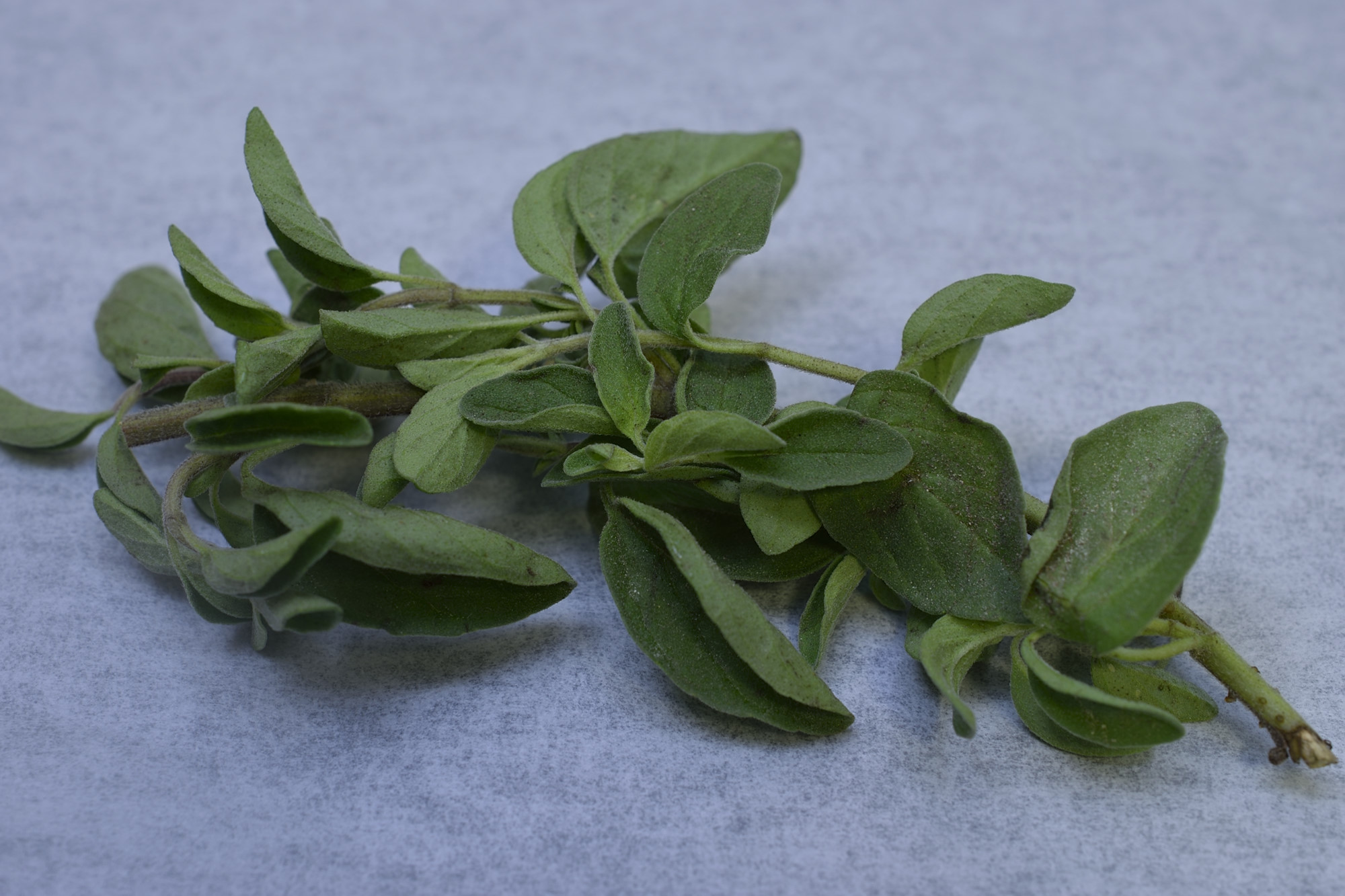
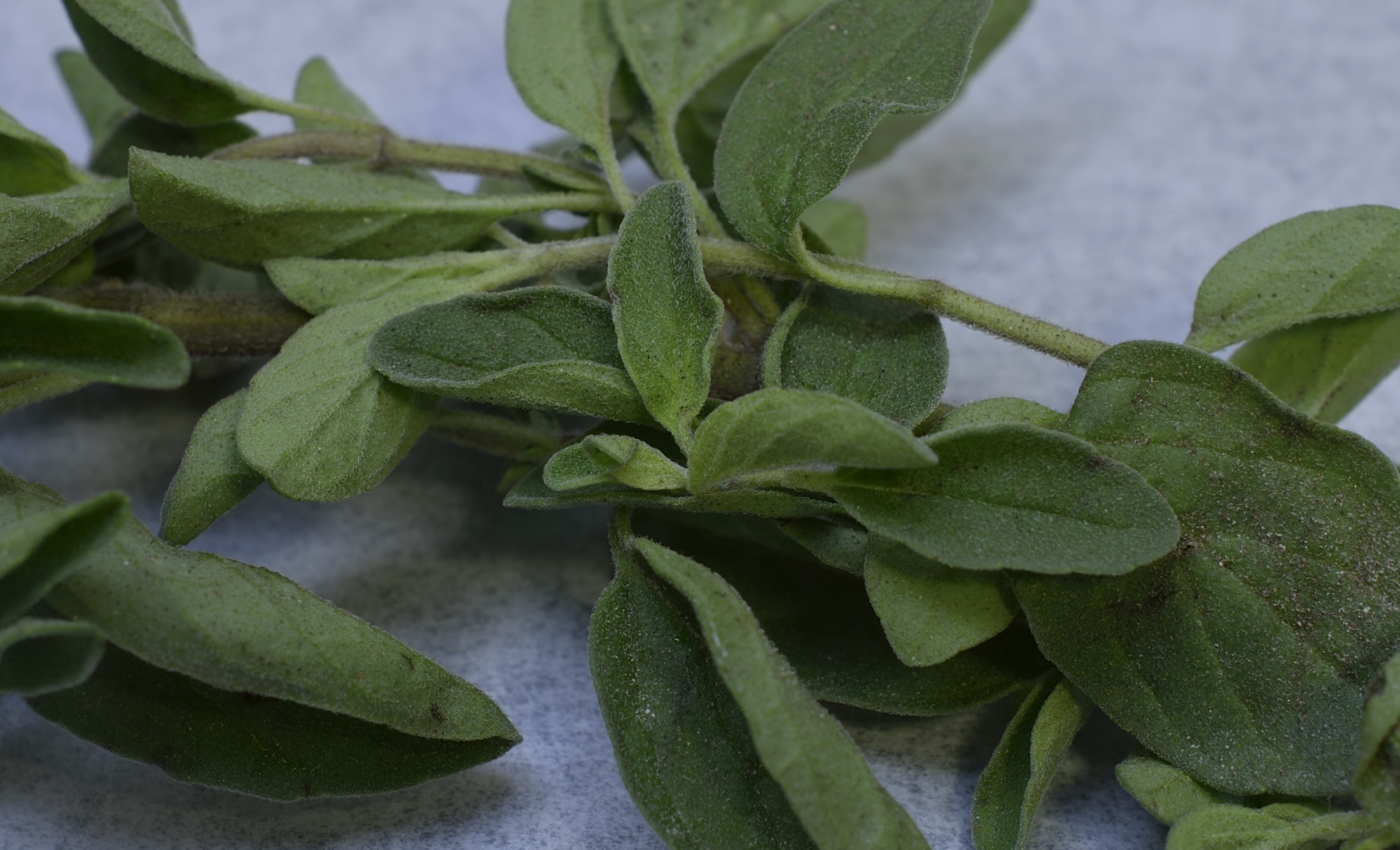 (Above) Oregano "“ Robust. Used in a lot of Mexican and Mediterranean dishes. Common flavoring/topping for pizza and other southern Italian dishes. Ubiquitous in Greek meat dishes. Parsley "“ Flat-leaf (Italian) or curly, the classic "green on the plate" herb. Other than tasting very "grassy," parsley is almost absent of flavor, high in flavonoids.
(Above) Oregano "“ Robust. Used in a lot of Mexican and Mediterranean dishes. Common flavoring/topping for pizza and other southern Italian dishes. Ubiquitous in Greek meat dishes. Parsley "“ Flat-leaf (Italian) or curly, the classic "green on the plate" herb. Other than tasting very "grassy," parsley is almost absent of flavor, high in flavonoids. 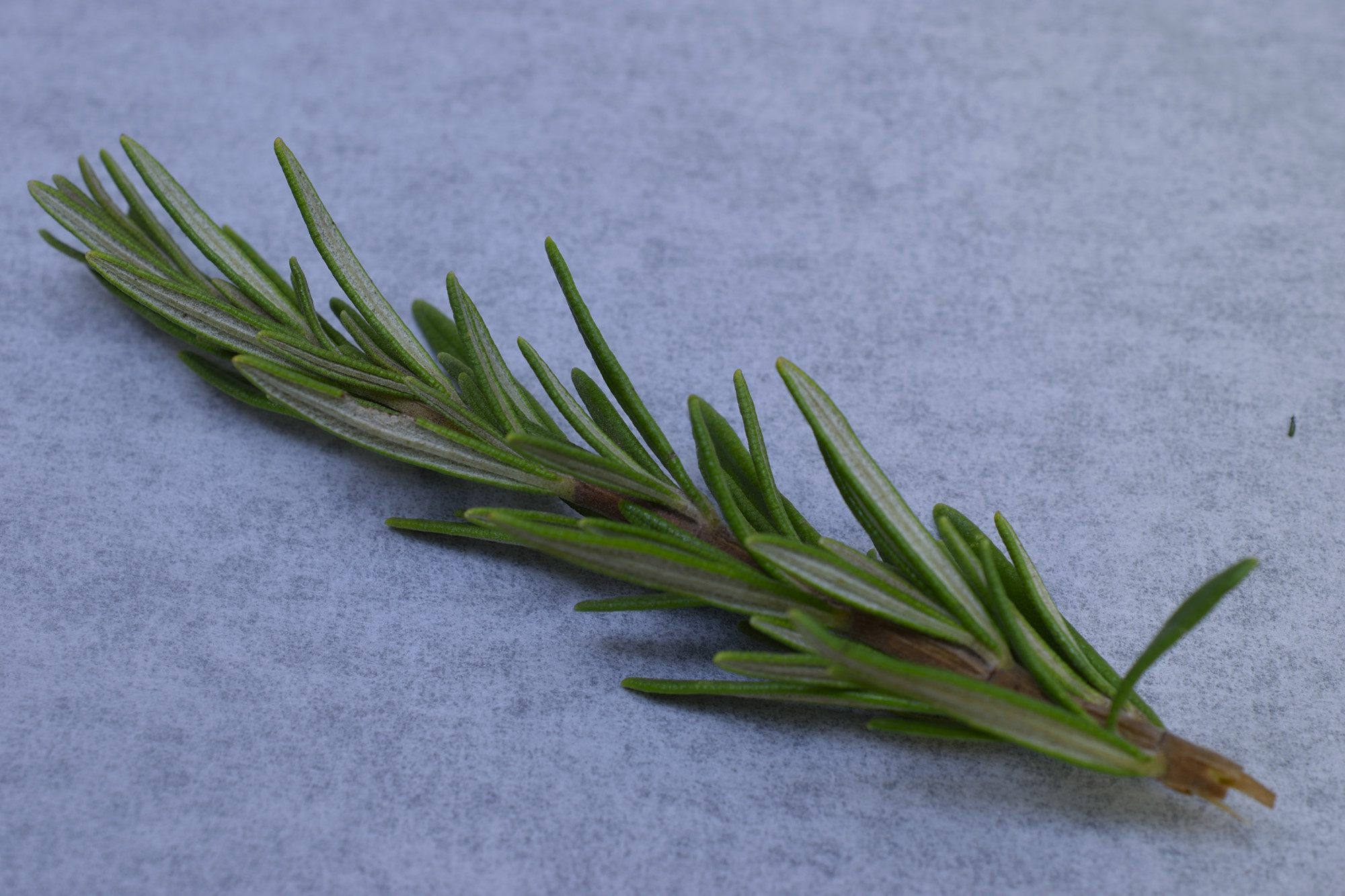 (Above) Rosemary "“ Strong and piney. Popular as a garnish for grilled meats, strong in aroma and flavor--a little goes a long way. Some chefs include rosemary in their Italian tomato sauce spice blends that otherwise include garlic, bay, oregano and basil.
(Above) Rosemary "“ Strong and piney. Popular as a garnish for grilled meats, strong in aroma and flavor--a little goes a long way. Some chefs include rosemary in their Italian tomato sauce spice blends that otherwise include garlic, bay, oregano and basil. 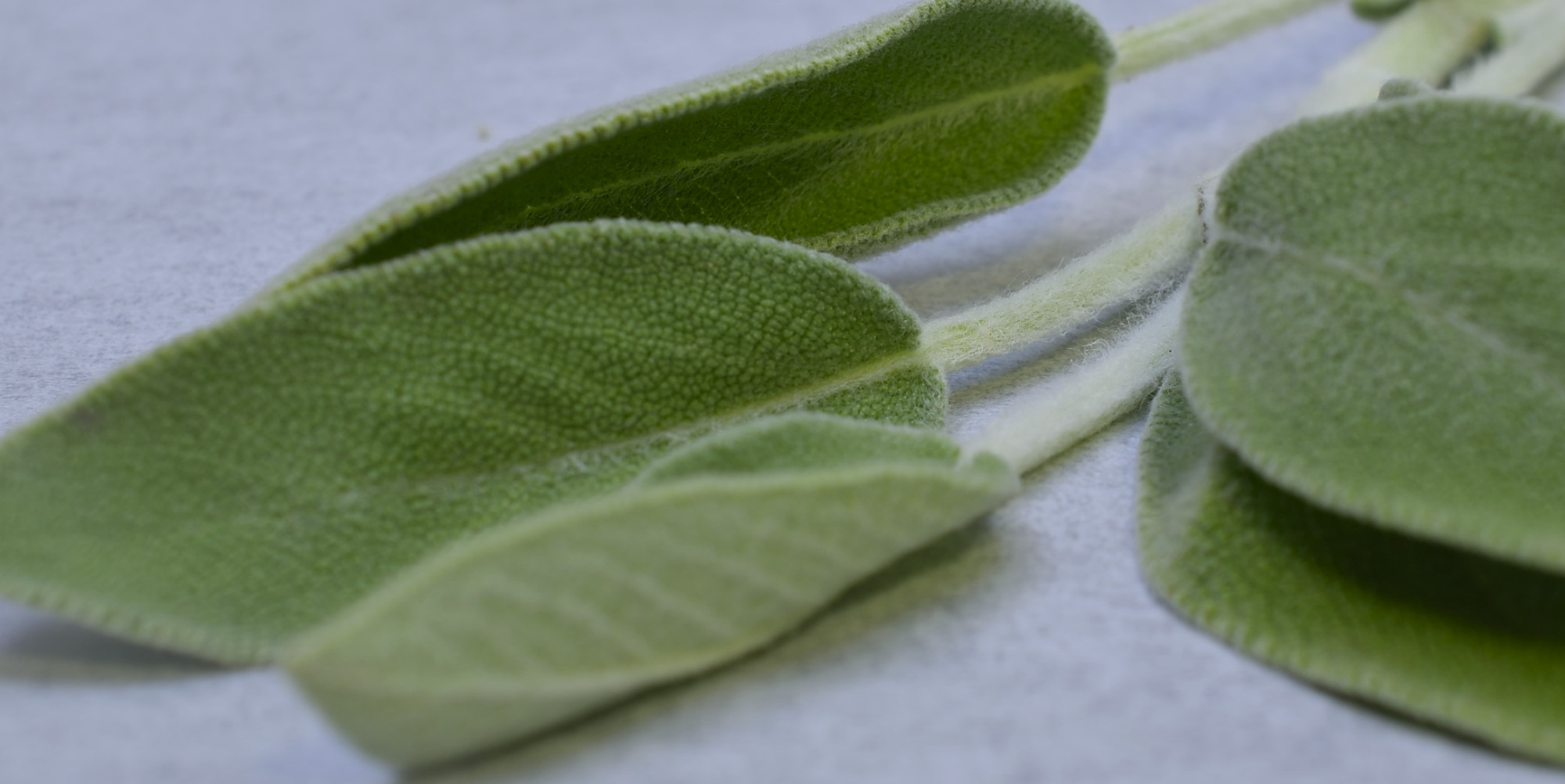 (Above) Sage "“ Pine/eucalyptus-like flavor. Potent ingredient in turkey stuffing/dressing. Sage is how "Saltimbocca all Romana" got its name--it literally jumps in the mouth when you bite into the raw sage leaf wrapped in veal and prosciutto. There is a famous tortellini dish (tortellini di zucca e salvia)--stuffed with slightly sweetened butternut squash and accented with crisp fried sage leaves. Truly distinctive and exclusive of substitution by other flavorings. Tarragon "“ Strong, flowery anise-like flavor. Béarnaise sauce would not exist without tarragon. Can be eaten raw in salads or used to flavor tomato dishes, chicken, seafood, or eggs.
(Above) Sage "“ Pine/eucalyptus-like flavor. Potent ingredient in turkey stuffing/dressing. Sage is how "Saltimbocca all Romana" got its name--it literally jumps in the mouth when you bite into the raw sage leaf wrapped in veal and prosciutto. There is a famous tortellini dish (tortellini di zucca e salvia)--stuffed with slightly sweetened butternut squash and accented with crisp fried sage leaves. Truly distinctive and exclusive of substitution by other flavorings. Tarragon "“ Strong, flowery anise-like flavor. Béarnaise sauce would not exist without tarragon. Can be eaten raw in salads or used to flavor tomato dishes, chicken, seafood, or eggs. 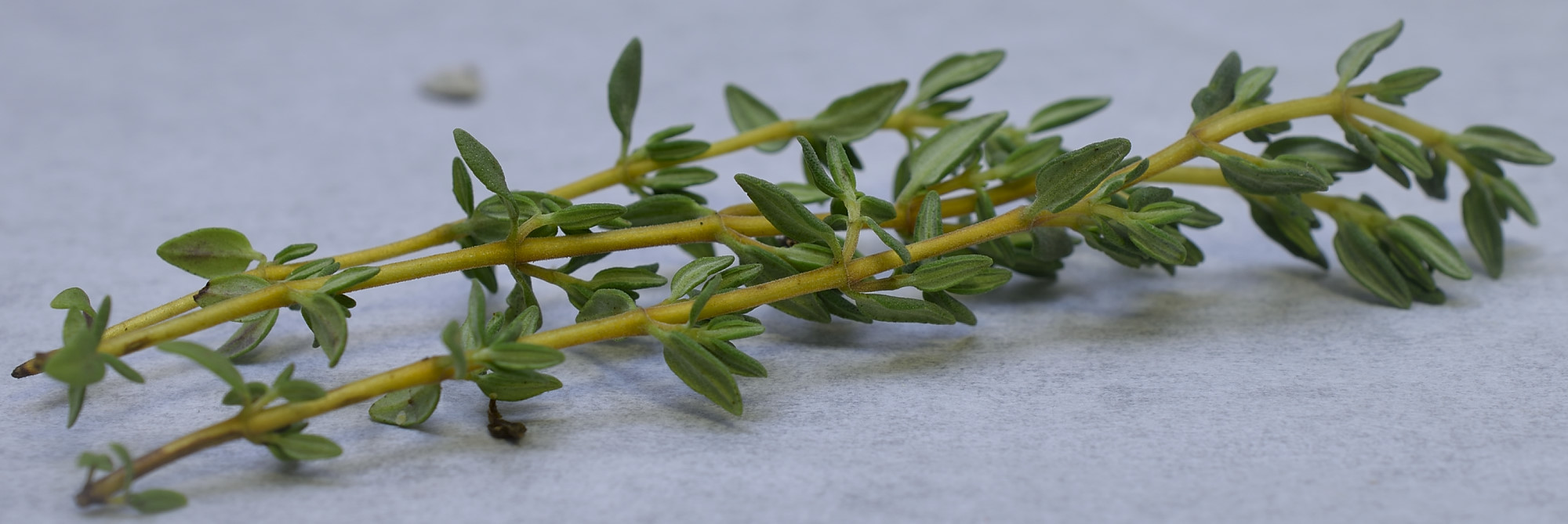 (Above) Thyme (also: Lemon Thyme) "“ Adds a pungent, woodsy flavor. Great as an all-purpose seasoning.
(Above) Thyme (also: Lemon Thyme) "“ Adds a pungent, woodsy flavor. Great as an all-purpose seasoning.
 (Above) Dill "“ Light and feathery herb with a pungent flavor. Most commonly used to flavor (dill) pickles, but equally pleasing with fish, potatoes, even tossed into salads. Looks exactly like Fennel/Anise. Fenugreek "“ Although this herb smells like maple syrup while cooking, it has a rather bitter, burnt sugar flavor. Found in a lot of Indian and Middle Eastern dishes. Marjoram "“ Floral and woodsy. Strong, fragrant and very similar to oregano. Mint "“ Surprisingly versatile for such an intensely flavored herb. Not just for chewing gum. Lamb, peas, pasta, potatoes, teas and chocolate! Many chefs find it interchangeable with basil.
(Above) Dill "“ Light and feathery herb with a pungent flavor. Most commonly used to flavor (dill) pickles, but equally pleasing with fish, potatoes, even tossed into salads. Looks exactly like Fennel/Anise. Fenugreek "“ Although this herb smells like maple syrup while cooking, it has a rather bitter, burnt sugar flavor. Found in a lot of Indian and Middle Eastern dishes. Marjoram "“ Floral and woodsy. Strong, fragrant and very similar to oregano. Mint "“ Surprisingly versatile for such an intensely flavored herb. Not just for chewing gum. Lamb, peas, pasta, potatoes, teas and chocolate! Many chefs find it interchangeable with basil. 
 (Above) Oregano "“ Robust. Used in a lot of Mexican and Mediterranean dishes. Common flavoring/topping for pizza and other southern Italian dishes. Ubiquitous in Greek meat dishes. Parsley "“ Flat-leaf (Italian) or curly, the classic "green on the plate" herb. Other than tasting very "grassy," parsley is almost absent of flavor, high in flavonoids.
(Above) Oregano "“ Robust. Used in a lot of Mexican and Mediterranean dishes. Common flavoring/topping for pizza and other southern Italian dishes. Ubiquitous in Greek meat dishes. Parsley "“ Flat-leaf (Italian) or curly, the classic "green on the plate" herb. Other than tasting very "grassy," parsley is almost absent of flavor, high in flavonoids.  (Above) Rosemary "“ Strong and piney. Popular as a garnish for grilled meats, strong in aroma and flavor--a little goes a long way. Some chefs include rosemary in their Italian tomato sauce spice blends that otherwise include garlic, bay, oregano and basil.
(Above) Rosemary "“ Strong and piney. Popular as a garnish for grilled meats, strong in aroma and flavor--a little goes a long way. Some chefs include rosemary in their Italian tomato sauce spice blends that otherwise include garlic, bay, oregano and basil.  (Above) Sage "“ Pine/eucalyptus-like flavor. Potent ingredient in turkey stuffing/dressing. Sage is how "Saltimbocca all Romana" got its name--it literally jumps in the mouth when you bite into the raw sage leaf wrapped in veal and prosciutto. There is a famous tortellini dish (tortellini di zucca e salvia)--stuffed with slightly sweetened butternut squash and accented with crisp fried sage leaves. Truly distinctive and exclusive of substitution by other flavorings. Tarragon "“ Strong, flowery anise-like flavor. Béarnaise sauce would not exist without tarragon. Can be eaten raw in salads or used to flavor tomato dishes, chicken, seafood, or eggs.
(Above) Sage "“ Pine/eucalyptus-like flavor. Potent ingredient in turkey stuffing/dressing. Sage is how "Saltimbocca all Romana" got its name--it literally jumps in the mouth when you bite into the raw sage leaf wrapped in veal and prosciutto. There is a famous tortellini dish (tortellini di zucca e salvia)--stuffed with slightly sweetened butternut squash and accented with crisp fried sage leaves. Truly distinctive and exclusive of substitution by other flavorings. Tarragon "“ Strong, flowery anise-like flavor. Béarnaise sauce would not exist without tarragon. Can be eaten raw in salads or used to flavor tomato dishes, chicken, seafood, or eggs.  (Above) Thyme (also: Lemon Thyme) "“ Adds a pungent, woodsy flavor. Great as an all-purpose seasoning.
(Above) Thyme (also: Lemon Thyme) "“ Adds a pungent, woodsy flavor. Great as an all-purpose seasoning. Spice Blends, Rubs & Mixes
Baharat "“ Black pepper, cumin, cinnamon, and cloves. Generic Middle Eastern blend for soups and sauces, lentil stews, pilafs, couscous, and even as a rub for meats. Bouquet Garni "“ Basic French flavor bundle with thyme, parsley, bay leaf and numerous variations. Used to flavor broths and soups. Cajun Blackening Spice "“ Signature color/flavor/crust originally intended for fresh water fish but now applied to chefs' choice of proteins and vegetables--all measured by volume--variations abound on this formula: 3 parts salt, 2 parts paprika, 1 part sugar, 1 part cayenne, 1 part black pepper, 1 part thyme, 1 part oregano, 1 part fennel seed, 1 part garlic powder, 1 part onion powder. Chili Powder "“ Tex-Mex catch all with ground chilis, cumin, oregano, cayenne, and lots of optional extras to make this seasoning uniquely personalized. Used for chili, stew, beans, grilled meat, and tacos. Chinese Five-Spice Powder "“ Chinese signature blend typically including star anise, Szechuan peppercorns, fennel, cassia (cinnamon), and clove. Adds fragrance, sweetness and depth to savory dishes, especially beef, duck, and pork. Curry Powder "“ Typically includes turmeric, coriander, cumin, fenugreek, and red pepper, but mixes can vary. Used primarily to quickly flavor curry sauces. (Indian) Dukkah "“ Includes nuts (most often hazelnuts), sesame seeds, coriander, and cumin. Great spice rub for lamb, chicken, and fish. (Egyptian) Garam Masala "“ Typically includes cinnamon, cardamom, cloves, cumin, coriander, nutmeg, and pepper. Sweeter than curry powder. Also used to season curry sauces. (Indian) Herbes de Provence "“ Usually savory; contains rosemary, marjoram, thyme, and sometimes lavender. Use as a marinade or dry rub for roast chicken, fish, and vegetables. (French) Old Bay "“ Legendary spice blend originating in the Chesapeake Bay region, fusing Northern and Southern flavor preferences to include celery seed, mustard, red and black pepper, bay leaves, cloves, allspice, ginger, mace, cardamom, cinnamon, and paprika. Designated as a boiling flavor for shrimp and crab. Pickling Spice "“ When pickling vegetables and even meats, these traditional and familiar flavors are almost always included--bay leaf, yellow mustard seeds, black peppercorns, allspice, and coriander. Pumpkin Pie Spice Mix "“ Cinnamon, nutmeg, ginger, cloves and sometimes allspice. Used for seasoning pumpkin pie, but also great in other spiced baked goods seasonally. Typical balance by volume: 5 parts ground cinnamon, 1 part ground ginger, 1 part nutmeg,1 part ground allspice, 0.5 parts ground cloves. Ras el Hanout "“ North African condiment as a rub or even table seasoning for sprinkling--cardamom, clove, cinnamon, paprika, coriander, cumin, mace, nutmeg, peppercorn, and turmeric. BBQ/Smoker Rubs "“ There are as many perfected rubs as there are smokers and barbecues. There is very little consensus on balance of ingredients and practitioners might be very secretive about their carefully calculated formulae. There is always salt. Sugar is almost always included, in amounts as little as half the amount of salt to triple the amount of salt. Paprika is almost always used to achieve the familiar red overtones. Pepper in all its forms, a lot or a little, and garlic almost always seems present. Rosemary, oregano, thyme, fennel, all the usual suspects, but I have seen cinnamon and allspice used as well. Tamarind, even, in the form of Worcestershire sauce. Shichimi Togarashi "“ Ubiquitous on Japanese noodles and grilled meats: includes but not is not limited to sansho or Sichuan pepper, dried citrus peel, sesame seeds, poppy seeds, hemp seeds, ginger, garlic, shiso, and nori. Za'atar Seasoning Blend "“ Middle Eastern in origin but now popularized in the West: thyme, sumac, and sesame seeds as another all purpose seasoning--hummus, flatbreads, grilled meats and vegetables, etc.
